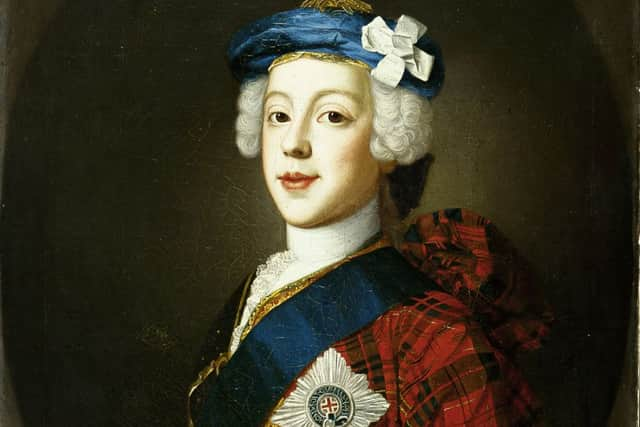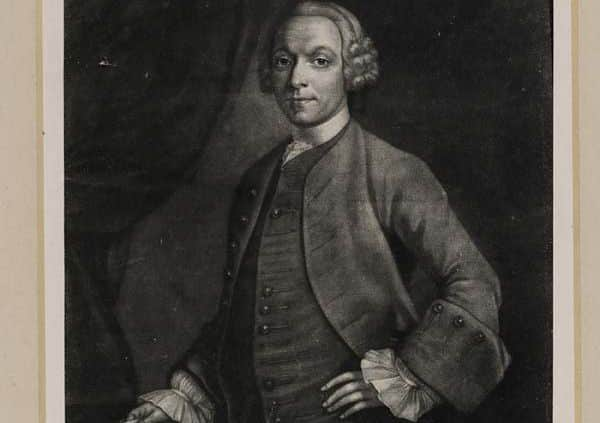The story of the last Jacobite to be hanged


Following his capture some eight years after the rebellion, Dr Archibald Cameron of Lochaber was stretched on a sledge and hung for 20 minutes before being cut down and beheaded at Tyburn on the outskirts of London, where enemies of the state were sent to their death.
He was arrested for high-treason at a house near Loch Katrine after a tip off by MacDonell of Glengarry - also known as Pickle the Spy - a former high ranking Jacobite turned informer to the Hanoverians.
Advertisement
Hide AdAdvertisement
Hide AdDr Cameron, by then living in France, was caught after returning to Scotland for the last time, some say to make a second collection of buried Jacobite gold hidden in the woods at Loch Arkaig in Lochaber.


The physician, who trained in medicine at Edinburgh University, was charged under the 1746 Act of Attainder for his part in the rebellion.
First imprisoned in Edinburgh Castle and taken to Tower Hill, London, he was then sentenced to death on the 7th of June 1753.
His wife, reportedly pregnant with their eight child at the time, was among those who begged for a reprieve for the “gentle and humane” physician.


The execution was to disturb many given the fervency of the Jacobite cause had, by this point, somewhat simmered with a form of peace falling on the nation.
According to James Browne’s A History of the Highlands, published in 1852, Dr Cameron, ahead of his execution, “conducted himself with manly fortitude and decorum and his fate was generally pitied.”
Browne added: “Some of the best wishers to the government thought the sacrifice of this unfortunate gentlemen a most unnecessary and wanton act at such a juncture, and that such a distance of time from the period of his attainder.”
Advertisement
Hide AdAdvertisement
Hide AdDr Cameron had been one of the first men to greet Bonnie Prince Charlie at Loch nan Uamh near Arisaig after he arrived in Scotland in July 1745.


The physician was the brother of Donald Cameron of Lochiel, with both men to become key figures in the Prince’s inner sanctum during the rebellion.
While both brothers took part in armed revolt, there is some dispute over the extent of Dr Cameron’s role in the uprising. While some say he was merely a private physician to his brother, others have credited him as being the Young Pretender’s personal assistant.
A short biography of Dr Cameron by Alexander Henderson, written shortly after his death, describes him as being a compassionate physician during the uprising who insured against “promiscuous slaughter of prisoners” after the battle of Prestonpans.


He also treated a Hanoverian army captain who lost a hand during battle with the physician caring for his brother after he was hit in both ankles with grapeshot at Culloden.
Such was his influence within the Jacobite leadership in Scotland, Dr Cameron was one of a handful of men to stay with Bonnie Prince Charlie in the secret hideout “The Cage” in August 1746.
The exact location of the bolthole, which slept only six or seven, is still debated. While some say it was a cave on the south western end of Loch Ericht, others believe it was an artificial structure on a southern spur of Ben Alder, covered in a thicket of holly and overlooking the loch.
Advertisement
Hide AdAdvertisement
Hide AdWhatever its co-ordinates, the accommodation was only open to the most trusted few.
Dr Cameron and his brother were to join the Prince on L’Horeaux as it set sail for France from Loch nan Uamh the following month.
The Prince was to soon take up residence in a quayside apartment in Paris and Dr Cameron, who was to live on French Government grants made to Jacobite exiles, was a regular visitor.
In addition, the French government was to make Dr Cameron a commander of the second battalion of a new Scottish regiment within the French Army, with his brother to be in overall command.
Life was good for Dr Cameron, who was also to receive a commission from the Spanish Government, due to his support for the Jacobite cause.
He returned to Scotland in September 1749 to consult with his allies on the gold that had been buried on the banks of Loch Arkaig three years earlier.
Dr Cameron removed 6,000 Louis D’ors following consultation with Macpherson of Cluny - a move that was to have him accused of embezzlement by ‘Pickle the Spy’. Dr Cameron travelled to Rome to win the backing of the Stuarts, which he did.
Advertisement
Hide AdAdvertisement
Hide AdIt was Dr Cameron’s trip to Scotland in 1753 that was to be his last journey home after Pickle alerted government forces to his whereabouts.
According to Browne’s A History of The Highlands, The French government paid a pension of 1,200 livres a year to his widow and granted an annual allowance of 400 livres to each of his two sons who were in its service.
In A Historical Account of the Life, Actions and Conduct of Dr Archibald Cameron, printed in London shortly after his death, it said: “Dr Cameron who might have made a considerable figure even in a court or a populous and well cultivated city, contents himself with exercising his talents among a people whose manner...resemble them very much to the wild beast of the forest.
“Yet by his gentle and humane carriage among them, many were taught to follow a more honest course of life than is generally ascribed to the Highlanders.”
More than 90 men were executed following their part in the uprising. Dr Archibald Cameron was the last, his death deemed necessary to prevent any future Jacobite plots against the state.
DOWNLOAD THE SCOTSMAN APP ON ITUNES OR GOOGLE PLAY
